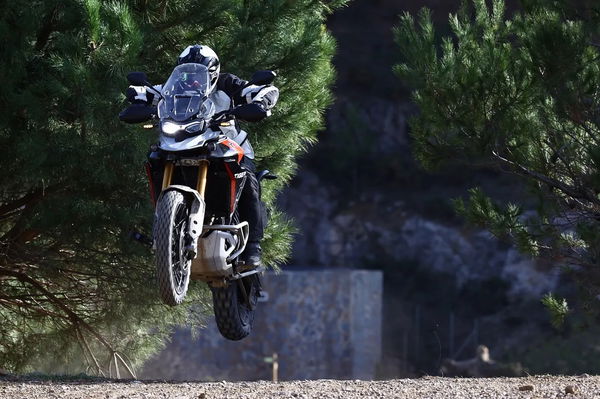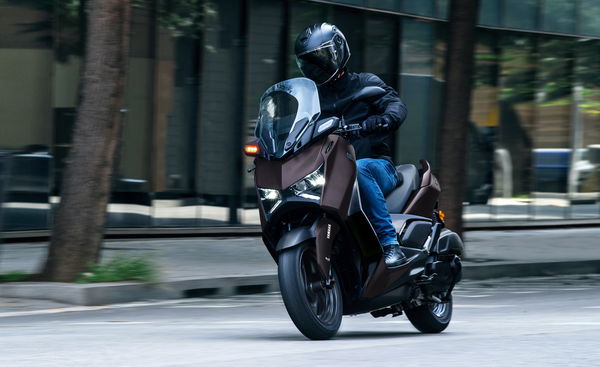Bike Curious | 12 Unashamedly quirky cult motorcycles
Singing the praises of the unsung, bigging up the underrated and giving top exposure to the underdogs... these are Visordown's ultimate Cult Motorcycles
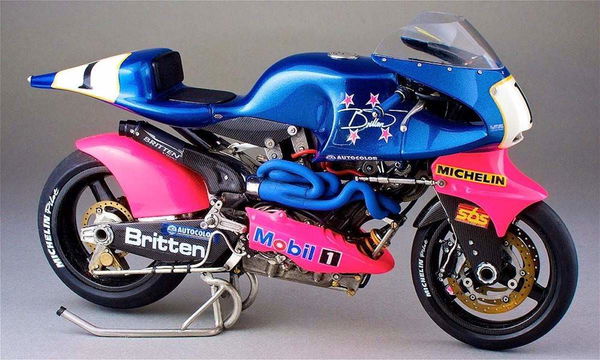
Question: Which motorbikes do you consider to be the quintessential classics of history or more to the point for this article - which are nailed-on cult motorcycles?
It should be a tricky question to answer. After all, ‘history’ covers a fair few years, which means thousands of models to choose from.
And yet, a quick Google search brings up fairly similar results on different listicles. Granted, models like the Ducati 916, the Honda Super Cub, the Triumph Bonneville and the Vespa have been immortalised in the annals of history for good reason because they are indeed classics of their form.
The downside of being immortalised, however, is over time this list of classic motorcycles becomes a touch, how do I put it… ‘obvious’. Besides, we all know models like the 916 are classics… what about the underrated unsung underdogs of the industry?
You know, the quirky oddballs, the motorcycles that identify as a bit ‘Alt’... or, as we put it, cult motorcycles. So, while these cult classics may not be the ‘best’ motorcycles ever made, these curios have had their legacies preserved for good reason
Top 12 Cult motorcycles
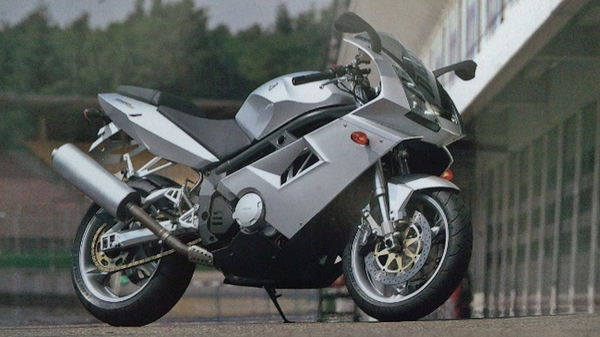
12 - MZ 1000 S
Of course this countdown had to include at least one model from a defunct manufacturer… because nothing says ‘Cult Classic’ like the trauma of trying to source parts for it when the time comes. So, if there are any MZ 1000 S owners reading this right now, thoughts and prayers.
A behemoth of motorcycling during the mid-20th century, while MZ wasn’t in the rudest of health come the turn of the millennium, models like the Skorpion had shown the German could still produce a decent motorcycle.
And so it proved again in 2003 with the launch of the MZ 1000 S, a surprisingly accomplished first attempt at a big sportsbike that - alas - turned out to be MZ’s last roll of the dice prior to its collapse in 2008.
As far as cult classics go, the MZ 1000S ticks multiple boxes. Indeed, the S - which later spawned the 1000 ST sports tourer and 1000 SF streetfighter - is brimming with quirky traits, such as it being styled by the man who designed the F-117 Stealth Fighter and being fitted with an Aprilia Falco-esque steel tubular, twin spar type frame.
Equipped with MZ’s first multi-cylinder engine since the 1950s, the 1000S’ 998cc twin-cylinder unit was also the largest and most powerful of its kind upon its release.
However, while it was celebrated as a competitive alternative in a competitive class, the MZ 1000S was pricey and lacked heritage, with slow sales contributing to MZ ceasing production altogether in 2008.
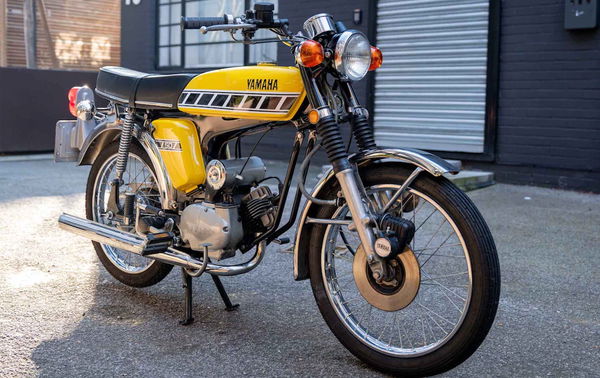
11 - Yamaha FS1-E
As far as motorcycle oddlings go, the Yamaha FS1-E is one of the oddest of the oddballs.
Nicknamed ‘Fizzy’ (as in F-S-E), the quirky runaround had been created specifically with attracting young bikers to the brand in the UK, where motorcycling had evolved into a full-on culture revered around the world.
Pitched as a moped, it was that designation that ultimately gave the FS1-E its identity and spurred its popularity.
Indeed, with UK law at the time stipulating mopeds be fitted with foot pedals, it meant the funky little Yamaha could be powered by both its 49cc engine and one’s own leg muscles.
With later models gaining a more traditional kick-starter, it means the pedal-equipped FS1-E has become something of a collectors’ item… especially in classic yellow, white and black which we reckon looks better on the FS1-E than on any other Yamaha model past or present. Just saying.
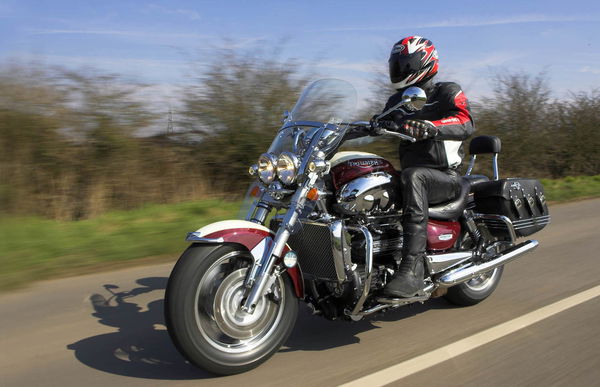
10 - Triumph Rocket III
When someone says ‘cruiser motorcycle’, it’s fair to say the mental image of a Harley-Davidson wafting down a flat road that stretches straight right to the horizon often springs to mind. It’s a vision rather at odds with riding in the United Kingdom, where even the straights are kinky…
Which is why the notion of British Triumph taking on the big ‘stars and stripes’ H-D - not to mention the more European tailored Honda Gold Wing and Yamaha Road Star Warrior - just seemed rather gratuitous.
So naturally Triumph went big - REALLY big - rather than stay home. The result? The Triumph Rocket 3, launched in 2004, a behemoth lavished in polished chrome and ostentatious appendages, from its twin headlights, extended flat tailpipe and prominent front forks.
If the styling wasn’t excessive enough, then Triumph doubled down with the largest engine to feature in a production motorcycle at a whopping 2,294cc with enough torque to plough a field.
Of course, the Rocket III was designed to roll miles in the United States, rather than thread awkwardly through piddly village streets here, but while Triumph’s effort was better than anything Harley was offering, Americans continued to default to the Milwaukee marque…
Still, for a first effort, the Rocket III for a time was the most bad-ass thing on the road… that was until the significantly better and more attractive new Rocket 3 arrived.
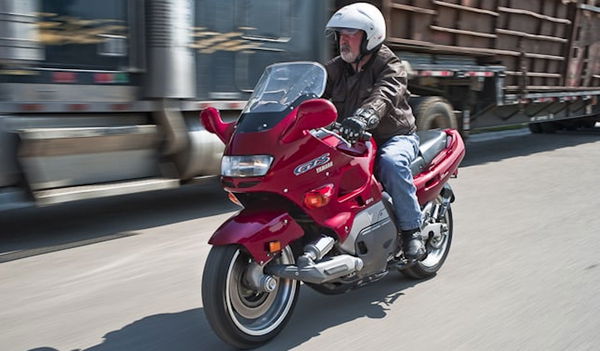
9 - Yamaha GTS 1000
Of all the big manufacturers, Yamaha is arguably the one you’ll find most likely to be thinking outside the box.
Known for its wacky concepts and futuristic design projects, while it’s unlikely we’ll ever see some of its more outlandish ideas reach production (because it’s fun just to show it ‘could’...), very occasionally Yamaha will get a fit of the ‘why nots?’.
Unfortunately, ideas that are clever can sometimes require clever customers to fully appreciate them, so while the 1993 Yamaha GTS1000 sport tourer could boast a long list of smart innovations, few could discern significance of its forkless front suspension, or the Omega Chassis concept with its single-sided front swingarm. Even fuel injection and ABS failed to generate enthusiasm as rare-for-their-time features.
Indeed, the GTS1000 should have been a radical game-changer - and in many ways it was - except you needed a degree in engineering to understand why.
For everyone else, the GTS1000’s fancy new components made it heavy and lethargic to ride, while all that innovation came at a chunky price tag too, turn offs that overshadowed an otherwise very useable, forward-thinking motorcycle that was axed just a year after it was launched.
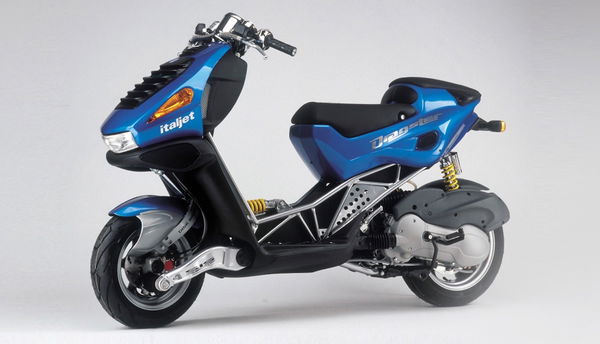
8 - Italjet Dragster
Think scooter, think Italy…
Birthplace of the effervescent Vespa, nothing says Italy more than clattering over cobblestones and darting down alleyways en route to the trattoria aboard a hardy, bluebottle-buzzing scooter with its tiny white-walled tyres.
Well, that’s if you live in the beautiful countryside anyway. If you live in the more hectic urban jungles of Rome, Milan and Turin, you need something to counter wayward driving standards and aggressive congestion… you need the Italjet Dragster.
Launched in 1998, the Dragster looks weird, yet funky in way that is hard to describe, while - entirely coincidently given the motorcycle preceding this at #8 - it was one of the few two-wheel machines to reach the market with a forkless front suspension arrangement.
It had some poke too with the flagship 250cc version generating 21.4bhp, which combined with those statement looks - often emphasised by lurid colour choices - made the Dragster a formidable, confidence-inducing scooter upon which to tackle those days when the sound of horns fill the air while fists are frustratedly shaken through the windows of backed-up cars…
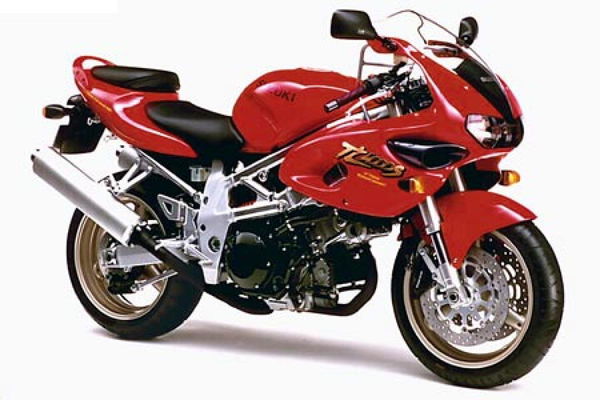
7 - Suzuki TL 1000 S
Nothing says ‘cult classic’ more dramatically than a motorcycle with a reputation so notorious as a handful to ride that it became known as ‘the widow maker’.
The two-wheel equivalent of that super extreme chilli sauce you’re going to try despite its health warning, early versions of the Suzuki TL1000S quickly became renowned for being unpredictable and tricky to ride.
At the heart of the issue was the TL1000S’ revolutionary but also, as it turned out, flawed, rotary damper rear suspension that Suzuki had developed as a way of negating the longer wheelbase required to squeeze in its 90-degree V-Twin engine.
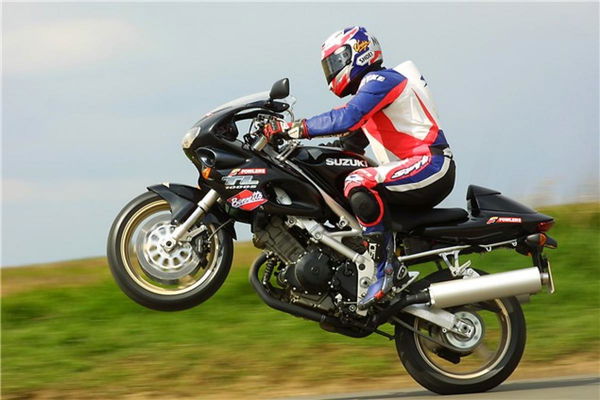
Together with its ultra sharp geometry, Suzuki had successfully achieved its aim of keeping the TL1000S compact…
However, it also made it too tail-happy on the road. It forced Suzuki to retro-fit a steering damper, but not before the damage had been done to its reputation.
Twenty-five years on, however, many look back on the TL1000S as an antidote to today’s modern, tech-tethered sportbikes… both as a reminder of how raw a high performance motorcycle can be, but also why safety first is always better.
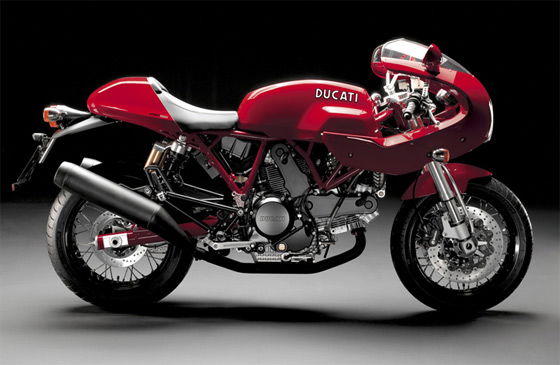
6 - Ducati SportClassic
It’s not often you see the words ‘Ducati’ and ‘flop’ in the same sentence, yet it happens very occasionally as demonstrated by the Ducati SportClassic, an embarrassing rarity in the Italian firm’s illustrious timeline.
Previewed in 2003 and hitting the road in 2006, the SportClassic represented a ‘modern classic’ throwback to the 1970s with designer Pierre Terblanche taking inspiration from Mike Hailwood’s against-the-odds 1978 Isle of Man TT winning Ducati 900 for this 21st century reimagining.
However, while the angular 900 was modern-looking for its day, the SportClassic bore little resemblance with its traditional looks and bulbous proportions.

Designed for lazier pursuits, the SportClassic perhaps didn’t quite fit with Ducati’s DNA but it felt premium, was enjoyable to ride and desirable in its own way..
However, it wasn't a big seller and just three years after it was launched, Ducati quietly dropped the SportClassic from its line-up.
Nevertheless, as is often the case with ‘misunderstood’ motorcycles (aka. cult motorcycles), the SportClassic has gone on to find a posthumous following, one that hasn’t stopped petitioning Ducati for its return…
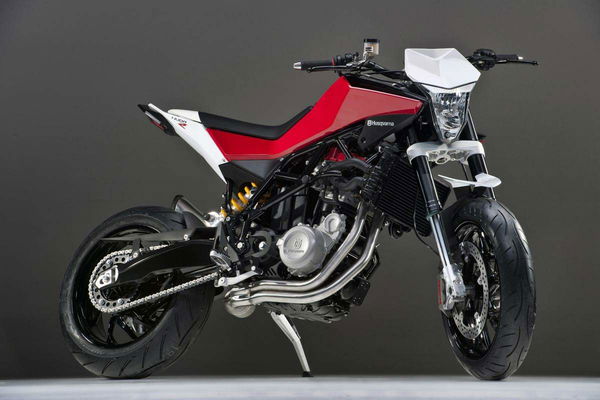
5 - Husqvarna Nuda
While Husqvarna’s recent history is rather blighted by having a confused identity - the symptom of a revolving door of owners that lurched from Cagiva to BMW and now to KTM over the last 15 years - the Swedish firm has nonetheless still pulled some quality, yet underrated, models out of the bag in that time, chiefly the Nuda.
While its tenure under the steer of BMW was brief - just six years between 2007 and 2013 - Husqvarna association with the German giants did give rise to this cheekily-titled, sharply-styled naked based on the decidedly gawky BMW F800.
While today it doesn’t take long to recognise the KTM origins once you look a little closer to Husqvarna’s current range, with BMW the connection was barely noticeable, so much so the more engaging Nuda was arguably superior to the F800.

With an edgy look inspired by its supermoto heritage and evoking the spirit of Steve McQueen on his beloved 400 Cross, the Nuda was such a statement on its own that it was hard to believe it emerged from the frumpy F800.
Even the engine was different, with Husqvarna enlarging the unit to 898cc and upping power to 105bhp.
However, the Nuda was also difficult to categorise, being too wild a supermotard in a conservative naked class, while it was too conventionally naked to be regarded as a gnarly supermotard.
By lacking kudos at one end and a hooligan image at the other, it meant the Husqvarna Nuda failed to resonate with buyers and sales were slow back then. Today though, it’s a cult star.
Indeed, when we featured the Nuda among Visordown’s ‘Top 10 Flops That Deserve A Second Chance’ feature late last year, of the ten motorcycles featured it was the Husqvarna that received the biggest endorsement as an unsung gem.
Proof once again that sometimes we just don’t know what we’ve got until it’s gone…
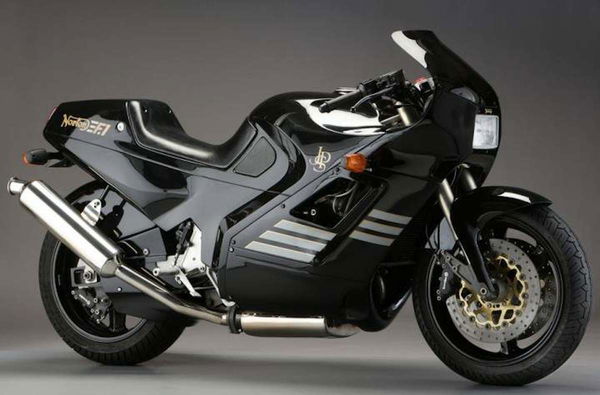
4 - Norton F1
With electric power coming to sound the death knell for the internal combustion engine, the changes on the horizon serve as a reminder of how ubiquitous ICE technology has been over the last century… and how it killed alternative approaches, such as the rotary engine.
Compact, light, high-revving, there are multiple attributes within rotary technology that make them superior to an ICE on a motorcycle, perhaps even enough to offset the compromises of oil consumption and iffy durability.
After Suzuki tried and failed in the 1970s, rotary remained dormant for more than a decade until Norton was convinced by Brian Crighton to choose a different route for its RCW588 race bike, which eventually developed into the roadgoing F1.
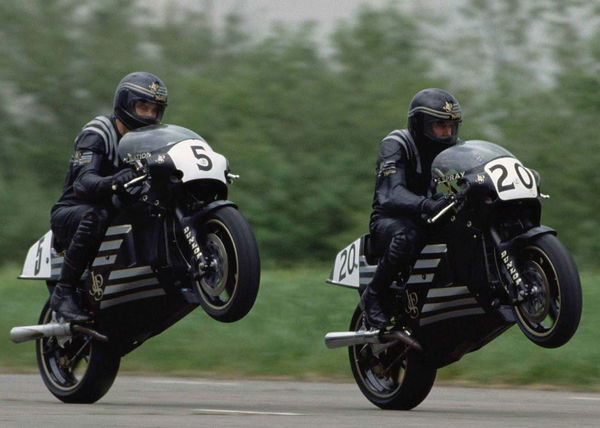
With its big wraparound bodywork, squared-off lines and menacing black livery - subtly popped by iconic JPS gold decals - the rotary Norton F1 is as dark, mysterious and deliciously desirable today as it was in 1991.
Existing during a golden age of sportbikes where a game of one-upmanship between the Japanese giants was moving the game on rapidly, the F1 stood up those comparisons just as comfortably as it stood apart as a curio, an exclusive one at that.
Alas, the F1 wouldn’t be the motorcycle to popularise rotary tech, with its brief resurrection beginning and ending with Norton in the early-90s.
However, by existing as one of the most uniquely engineered motorcycles ever made, the legend of both the Norton F1 and rotary tech will forever endure in cult folklore.
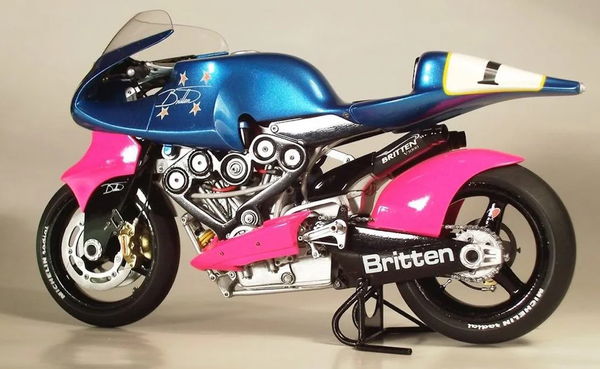
3 - Britten V1000
There is a strong argument to make for the Britten V1000 being the greatest motorcycle ever (painstakingly) built. So few in numbers, so exclusive in its rarity, the Britten V1000 it is the King of Cult Motorcycles for one simple reason; It was built to prove a motorcycle like this could be built.
Conceived, designed and constructed by John Britten and a group of friends in the New Zealand city of Christchurch, though only 10 Britten V1000s have ever existed in the world, each was brimming with innovation.
From the extensive use of carbon fibre, the radiator located under the seat, double wishbone front suspension, frameless chassis, engine data logging, the Britten V1000 was packing features - many of which are considered premium today - way back in 1991.
Its 999cc V-Twin engine kicked out 166hp, which propelled the feathery 138kg V1000 to victories in Daytona’s Battle of the Twins, new top speed benchmarks at the Isle of Man TT and numerous World Records for 1000cc motorcycles.
In short, the Britten V1000 is that rare thing - a true game changer…

2 - Honda Motocompo
At a time when e-scooters are all the rage as convenient, practical and easy-to-use modes of transportation, we think Honda is missing a trick by not reviving the brilliant little Honda Motocompo.
Even the origins of this quirky, adorable fold-up scooter qualifies the Motocompo for this rundown. Developed in the spirit of ‘things you didn’t know you needed in your life’ the Motocompo was pitched as an accessory option on the subcompact Honda City car.
With the City being designed specifically around its dimensions, the Motocompo - dubbed ‘trabai’ or ‘trunk bike’ - was essentially a mirroring two-wheel equivalent of the City’s small, light and easy urban credentials.

When paired with the City, the Motocompo seemed a rather superfluous machine that didn’t quite serve the purpose Honda intended. Plus, it took up all the boot space in your car...
However, when you separate the two and view the Motocompo on its own, its cult appeal couldn’t be more evident.
So while it looked like a sewing machine on wheels when folded, once unfurled the Motocompo charmed as a dinky, low slung scooter that was never anything less than a giddy hoot to ride… so long as you didn’t go too far.
Together with its fire engine red finish, retro typeface and unique packaging, the Motocompo’s legacy lives on today as one of the weirdest and most wonderful two-wheelers ever made.
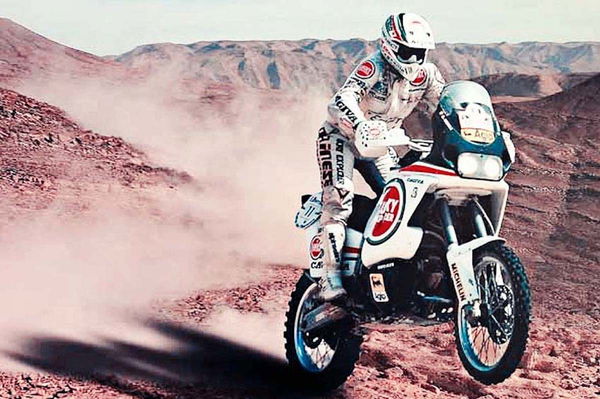
1 - Cagiva Elefant & Cagiva Mito
Maybe it is because Cagiva is no longer an active motorcycle brand
Or because the Italians - until recently, anyway - had had enough of playing in the dirt.
Or because the era of snap, crackle and pop pocket-size two-strokes is no more.
Whatever it is, all we know is it’s difficult to look back at the Cagiva Elefant and Cagiva Mito without pining for these unassuming icons of their era.
We’ll swerve attempts to synopsise Cagiva’s complex history of owning and being owned by multiple brands over time, but for sure the Elefant ‘traille’ off-roader and Mito mini sportsbike were its finest moments as two models that epitomise what it means to be a cult motorcycle. So much so, we’ve given them equal footing atop this rundown.
A desert-road dual-sport motorcycle equipped with a Ducati V-Twin engine in most of the many guises it was available, the Cagiva Elefant was a curious creation with a cute name.
However, it also had charm in droves, the slab-side, utilitarian rally-raid inspired looks appearing rugged, yet unintentionally fashionable too, while the injection of Ducati DNA gave it plenty of character on the road too.
The Elefant was also capable off it, as represented by its status-affirming victories in the Paris-Dakar Rally with the Lucky Strike-liveried Elefant 900, a machine that has matured into such an icon today, it’s as much of a head-turner as anything exotic…
Which is fitting since Cagiva’s other opus - the Mito - was the piccola mini-me version of the Ducati 916, arguably the most exotic motorcycle of all time.
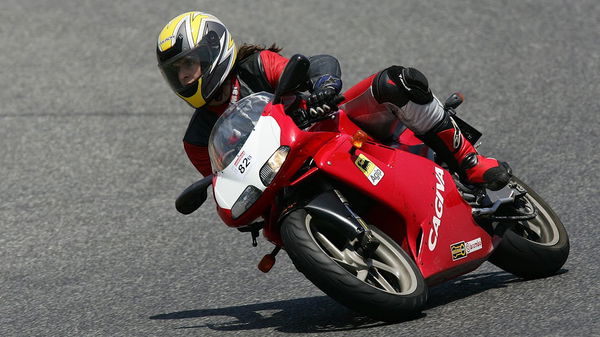
While one might consider imitating one of the world’s most beautiful motorcycles before then shrinking it down to pint-size to be sacrilege, in reality the Cagiva Mito was the perfect tribute as a stylishly affordable, easy to ride, eager to please urban runaround.
Indeed, as far as facsimiles go, the Mito is well-judged, right down to the GP-spec handling and two-stroke zip that could give you just as many goosebumps darting through the city streets as a Ducati gives you on the open road.
Alas, with the two-stroke era halted by tightening emissions regulations, the end of the Mito in 2012 also meant the end of Cagiva… at least for now.
After all, that’s the thing about ‘cult’ figures… they can never die. In fact, many - one day - go on to return…
